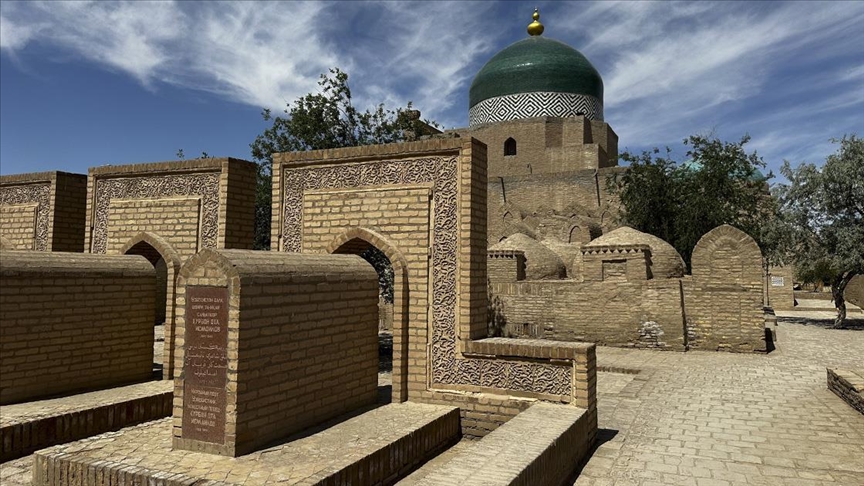Unique tradition: Region in Uzbekistan builds above-ground tombs to avoid shallow groundwater
In western Khorezm region, locals honor centuries-old tradition of placing dearly departed in above-ground tombs instead of underground gravesites

KHIVA, Uzbekistan
For centuries, the people in a region of western Uzbekistan have buried their dead in above-ground tombs due to groundwater being very close to the surface.
The Khorezm region is located near the Amu Darya, also known as the Oxus River, one of Central Asia's longest rivers, stretching out over 2,500 kilometers (over 1,550 miles).

The region is rich in groundwater resources, but the water’s proximity to the surface makes digging graves and the burial process difficult.
Due to this natural hurdle, the people of the region build tombs above ground instead of digging into the earth.

Cultural and religious customs are respected when the departed are laid to rest in these tombs, and care is taken to honor them and preserve their memory.
The tombs are carefully constructed, often using mud bricks, made from natural elements that are abundant in the region.

Materials such as stone and clay, as well as some decorative elements, are used to build these special tombs.
The tombs are built with roofs or domes and are designed to match the local architectural style.

The name and information about the life of the deceased, sometimes along with photographs, are displayed outside the tomb.
As is customary, the names of the deceased and their dates of both birth and death are inscribed on the tombs, and in some cases, verses from the Holy Quran are included, as Uzbekistan is an overwhelmingly Muslim country.
Age-old tradition
Speaking to Anadolu, Sharipov Matnazar, a resident of the Khiva region, explained why they do not bury the dead underground but instead place them in above-ground tombs.

"The main reason for this is that the groundwater is close to the surface. When we dig into the ground, we can hit water at a depth of just one or two meters," or about 3 to 6 1/2 feet, he said.
Matnazar added that the deceased are wrapped in a shroud according to Islamic custom and then placed in the above-ground tomb by a family member.
"After the deceased is placed in the tomb, the first brick of the tomb must be laid by a relative," He said.
"Others then complete the tomb. Once the burial is complete and the grave is sealed, verses from the Quran are recited," he explained.

There are also tombs in the shape of domes, he explained, where multiple family members are given their final resting place together.
This practice stems from the tradition of burying members of the same bloodline side by side, he said.
However, Matnazar said that such domed tombs do not include children who pass away young, as they are buried underground instead.
The tombs are built on top of each other due to limited space, he said.
"We have been burying our dead in this way for centuries, a tradition passed down to us by our forebears," Matnazar added.
*Writing by Zehra Nur Celik




